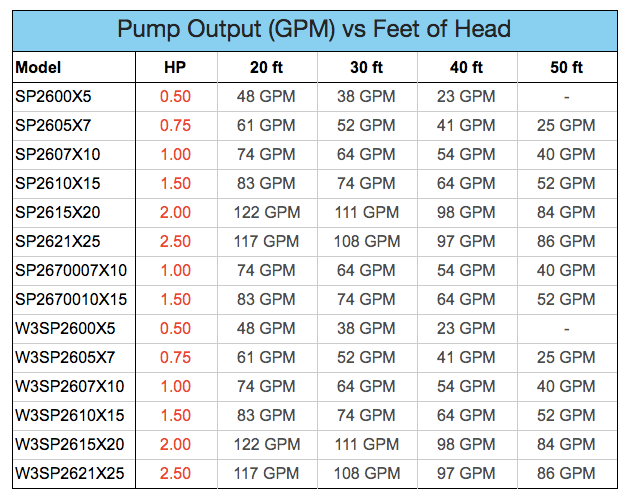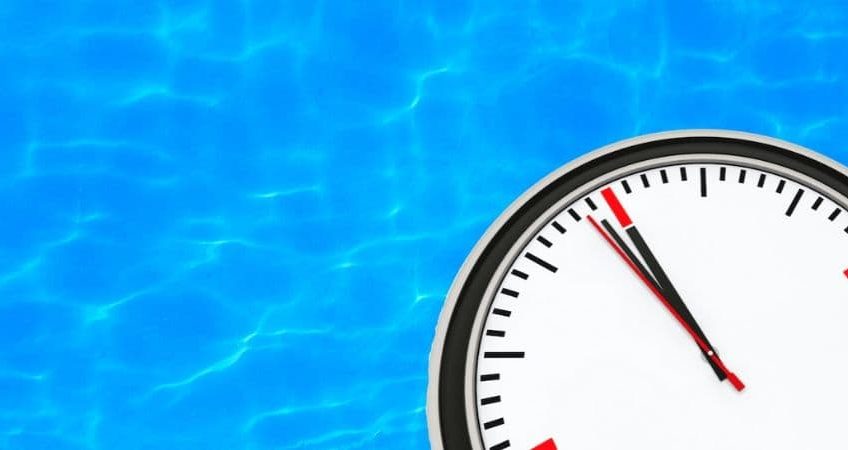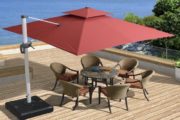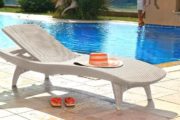This independent website is funded by its readers. It can earn a commission on any purchases made through product links, at no extra cost to the buyer. Learn more >
How long your pool pump runs every day affects your pool health and has a direct effect on your bank balance health too because the pool pump is the largest contributor to your swimming pool running costs.
There’s quite a few things a pump has got to do. Skim the surface, circulate the pool, disperse chemical treatments, transport dust and debris to the filter and run your pool vacuum if you use one. ( which we don’t recommend ) You might also have an installation bristling with add ons that the pump has to take care of too, like solar panels, heaters and heat pumps etc.
Unfortunately there’s no magic number for how long to run your pool pump. It should run long enough to circulate at an absolute minimum at least one complete pool volume every day. It’s actually amazing when you look at the size of the pump compared to the size of the pool then you’ll see its got quite a task to pull off day in and day out.
The pump is the foot soldier of your pool setup, without it nothing gets done and we’ve got a duck pond instead of a pool.
Let’s dig a little deeper and try to unravel the mystery of how long to run a pool pump.
How Long To Run A Pool Pump
So for a healthy pool ideally we want the water to pass through the filtration system a minimum of once a day. Twice a day is recommended, especially in the hot summer months when the pool is getting a lot of use, and our old enemy bacteria especially likes the warm water. This should help to ensure an even daily distribution of chemicals too.
If you’re running a salt chlorination system with a variable speed pump then things get a little complicated. Don’t worry though we’ve written a whole article on dealing with that situation. You can find it here >>
To make sure your pool is circulating enough we need to know our turnover rate. Turnover rate isn’t about the number of people who get fired or leave our workplace. It’s all about the size of our pool and and how quickly the pump can move a complete pool volume of water. So to know how long to run the pool pump we’ll need to work out the turnover rate.
How to Find A Pools Turnover Rate
To find your turnover rate you’ve got to reverse engineer your pump and plumbing to find out how many GPM are actually being pumped into the pool. It sounds easy but there’s a couple of factors involved here like pump HP and feet of head.
Pool pumps are advertised and sold by HorsePower not GPM. HorsePower isn’t something that anyone can really relate to when looking at a swimming pool. If you can see horses in your pool then it’s probably time to cut down on the wine a little.
Finding the HorsePower of your pump should be easy enough though, but calculating feet of head correctly is quite a complex and time consuming calculation. It involves measuring all your plumbing lengths, counting the bends and noting if they’re 45 or 90º, finding you filter specification and multivalve make etc, etc.
When you’ve assembled all that information its tin to enter it into a calculation sheet. Yikes !! When all this is done calculating the feet of head will give us a reasonable estimation of all the frictional forces that are reducing the water flow into the pool.
We’ve compiled some data from the Hayward Super Pump® data sheets and inserted HorsePower to illustrate the effect feet of head has on your pool water turnover rate.

Unfortunately you’ll have to dig around on the internet to find the data sheets that provide this information.
Install a Flow Meter
In the real world installing a Flow Meter is the only way to find an accurate volume of water arriving to your pool from the pump.
They’re not too expensive and having an accurate GPM value of water entering your pool will almost certainly save you a lot of money. It could substantially cut down your pump run times.
If you’re running a 2 speed or variable speed pump it’s a really invaluable monitor on your turnover rates.
- 1. 5" FlowVis flow meter, FV-C-15
- Installation flexibility; installs horizontally, vertically, or even upside-down
- Clear, easy-to-read scale in GPM with key velocity points (FPS)
We think pool flow meters are so important we’re written a whole article on why the smart pool owner wouldn’t be without one. Check it out here >>
Calculating A Pools Turnover Rate
Once you’ve assembled the pump data calculating your turnover rate is pretty simple, no science degree need here.
So now the next thing you need to know is the water volume of your pool. Most owners will already know this, but if not then a simple rough calculation is good enough for our purposes. We don’t need to get it right down to the last pint.
SHAPE of POOL | FOR GALLONS |
Rectangular | L x W x Av Depth x 7.5 |
Circular | D x D x Av Depth x 5.9 |
Oval | L x W x Av Depth x 6.0 |
You’ve got your GPM minute value just multiply by sixty for gallons per hour then divide that into your pool volume. So it looks something like this.
POOL VOLUME / (GPM x 60) = HOURS TO RUN THE POOL
So we’ll use the Haywards SP2605X7 0.75 HP pump from our chart above. Let’s combine it with a 20000 gallon pool that has 20 feet of head.
20000 / (61 x 60) = 5.46 hours pump run time for one full pool circulation
When To Run A Pool Pump
Is it better to run a pool pump at night or day? We generally recommend running the pump during the evening and through the night. There’s a few good reasons for doing this.
Although it’s brilliant swimming at night most of the pool usage is during the day. You’ll want to be using the pump to disperse your pool chemicals. Of course that’s better done without bathers in the pool especially seniors and children. In fact some chemical treatments are better added at night so the sun doesn’t reduce their effectiveness. If you’re planning to shock the pool for example that always needs to be during the night to get its full effect.
Lots of utility providers offer a cheaper off peak electricity plan and that’s generally through the night. If you’re not on one then it’s definitely worth checking out. If you are on one then you’ll want to run your pump at night anyway.
Of course if your pump is a noisy old-timer you might need to reconsider. Or invest in a nice new variable speed one !!
Use a 24 hour timer to make the most of off peak electricity times, it’ll put your pool pad on autopilot.
- AUTOMATE YOUR HOME/OFFICE: The timer allows you to turn on and off your air conditioners, water heaters, pumps, signs, lamps, fans and other appliances automatically during a 24-hour cycle and once programmed, the settings will repeat daily
Buying A New Pump
We’ve just looked at back engineering our existing pump and pool installation but if you’re shopping for a new pump then things are even easier to work out, It’s an important part of creating an energy efficient pool.
If you’re shopping for a new pump then we strongly advise you co consider a variable speed pump. Federal legislation is coming into effect in 2021 making it obligatory to fit one to many pool sizes. They’re a brilliant addition to your pool pad and cut your pump related energy bills by 60 – 70%. They’re a tad expensive but pay for themselves fast by reducing your electricity charges. We’ve written a complete guide to variable speed pumps here >>
With the tools and information we’ve given you here buying a new model will be a breeze. Hopefully how long to run a pool pump has lost its mystery.
Recommended Reading
Images from Amazon Product Advertising









